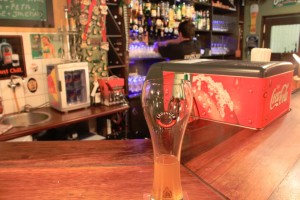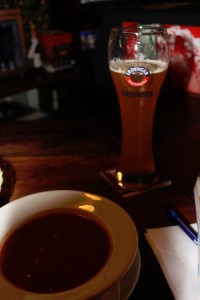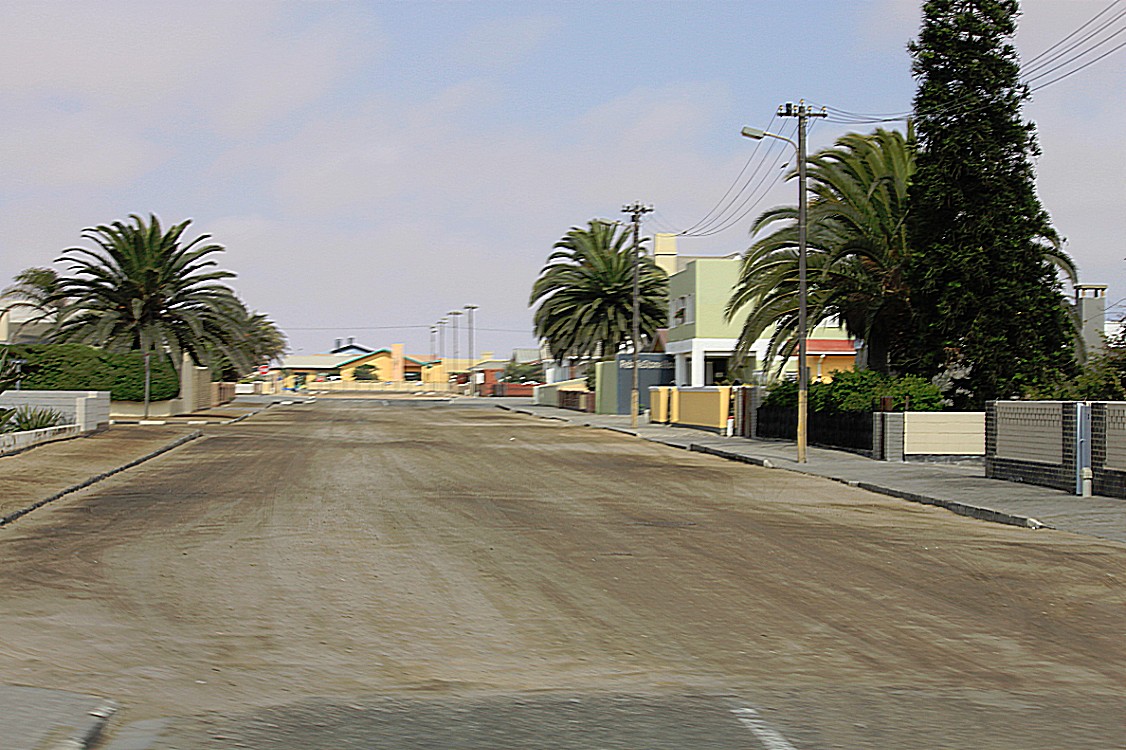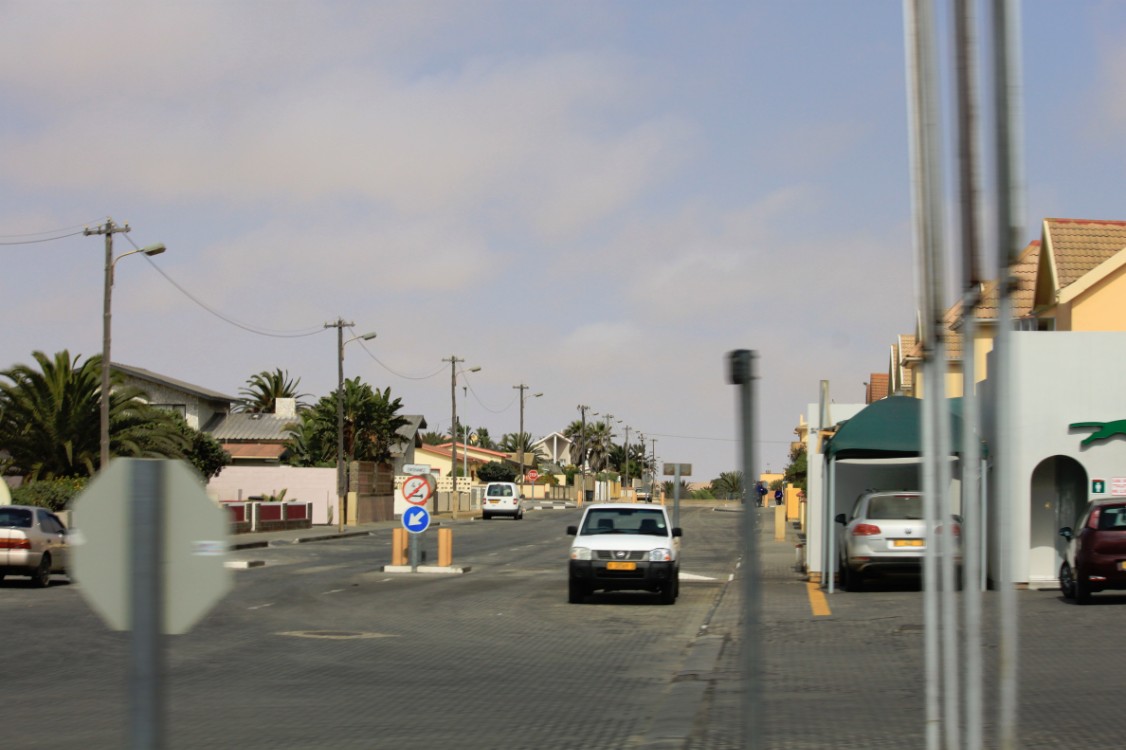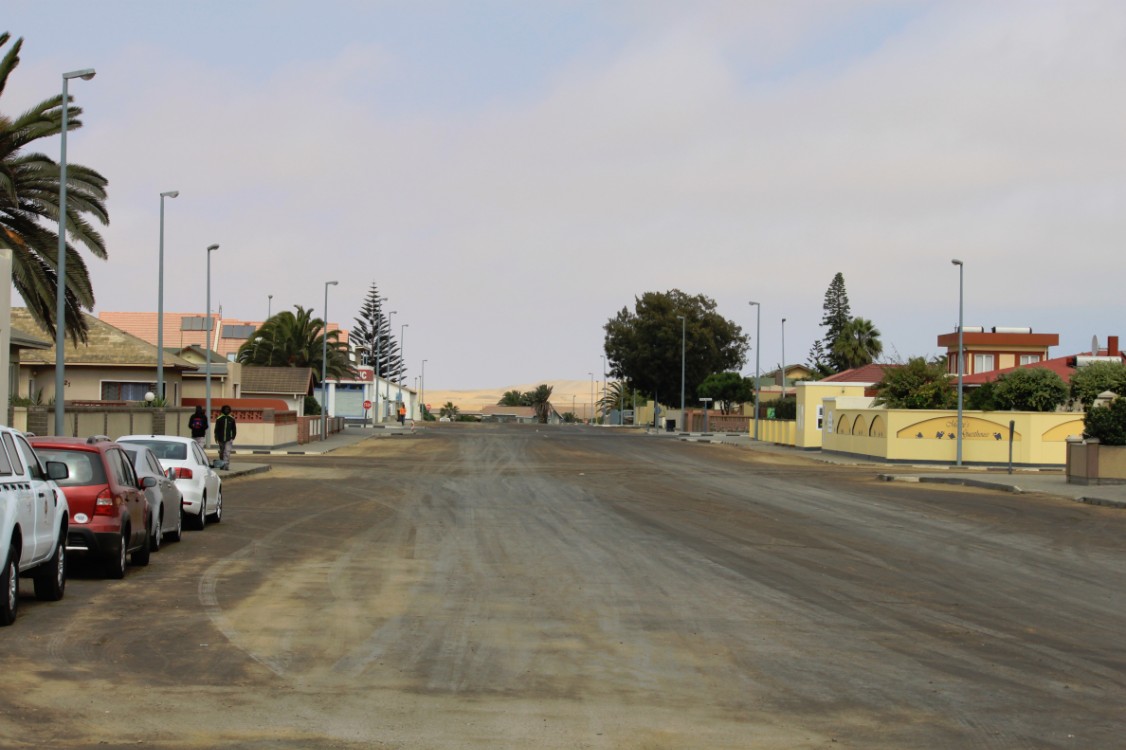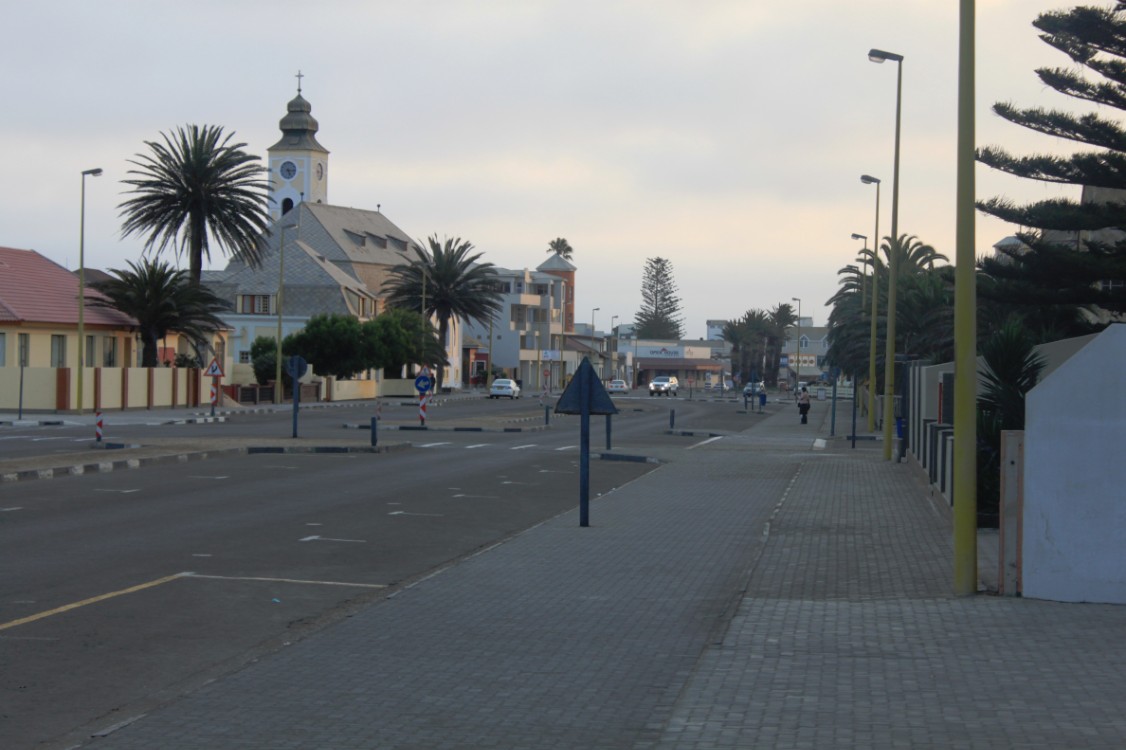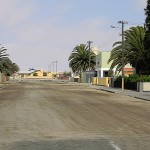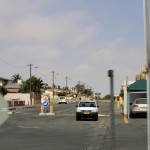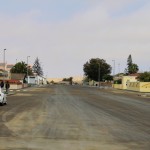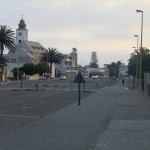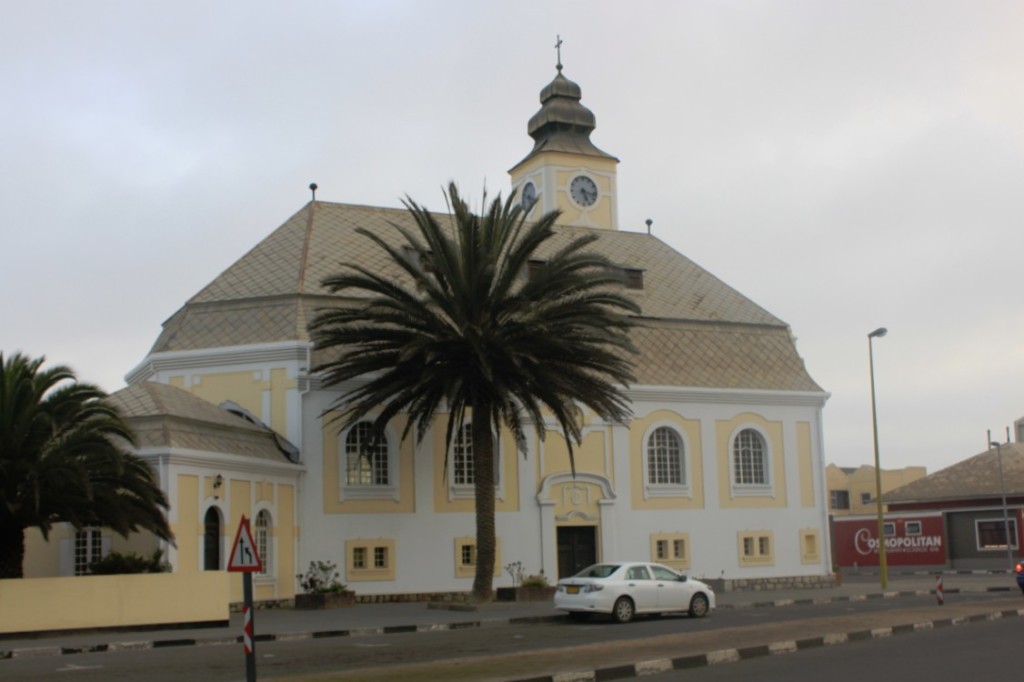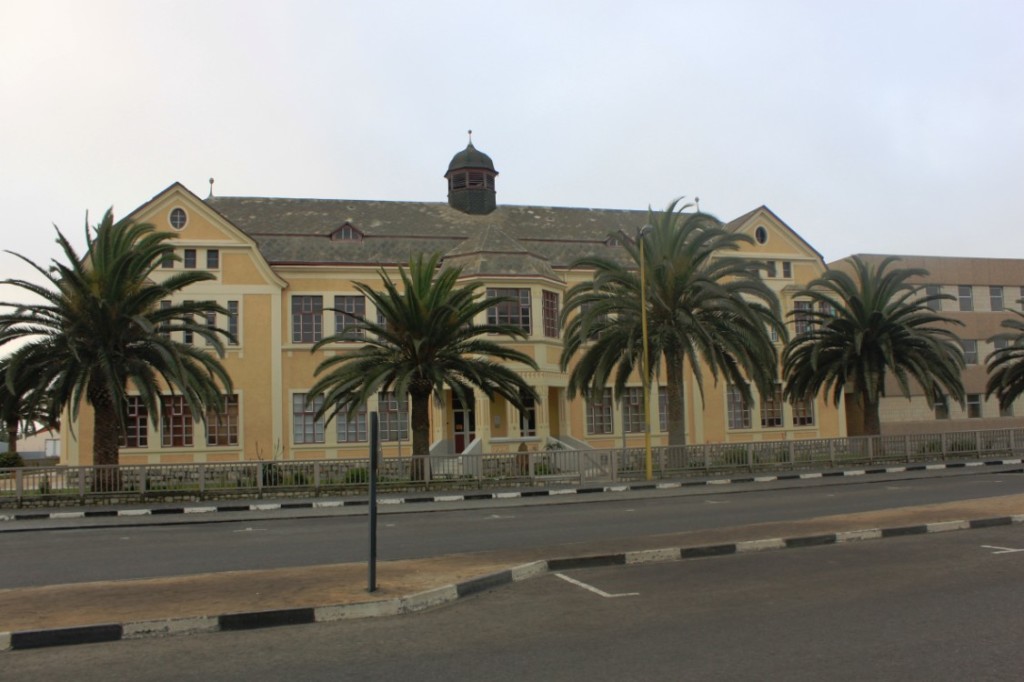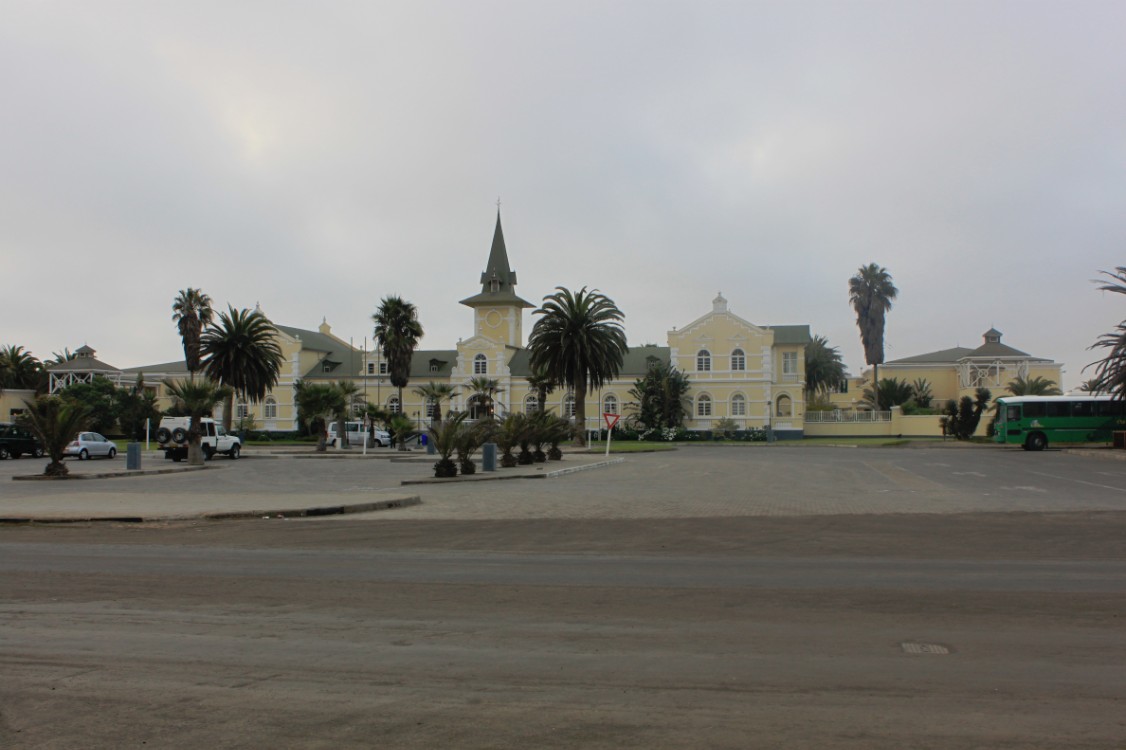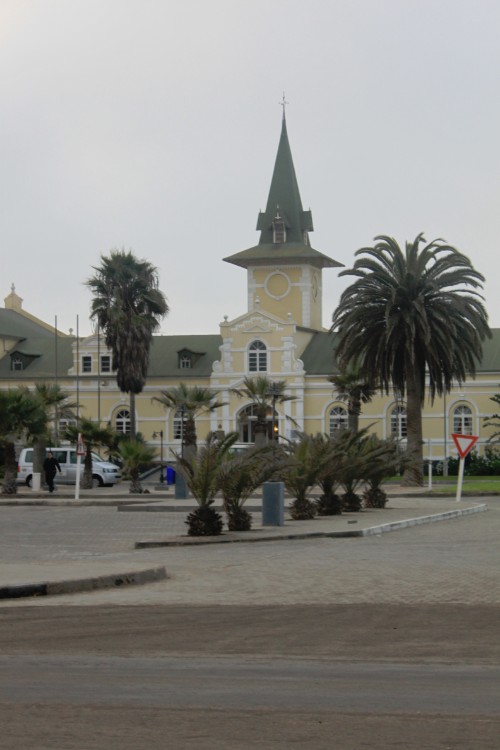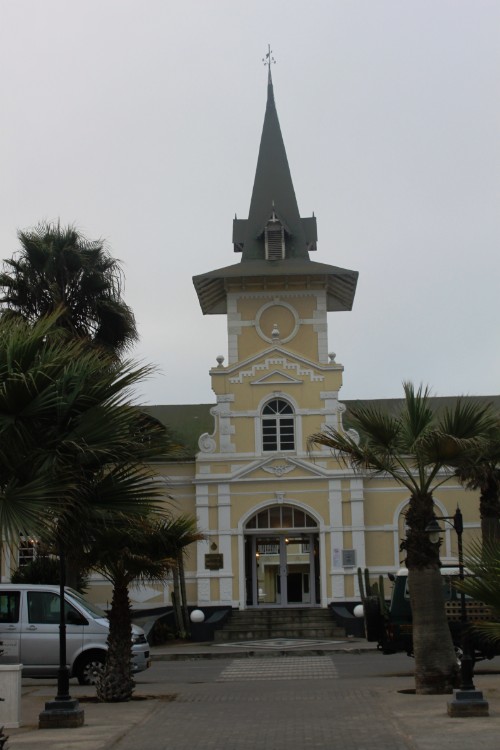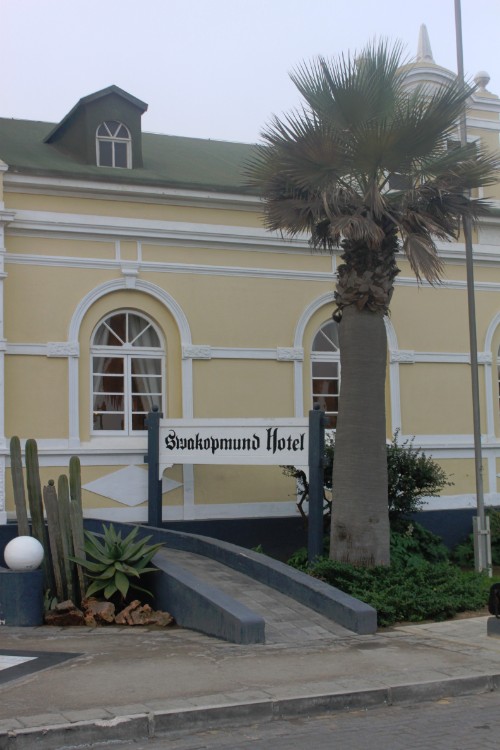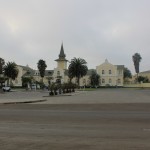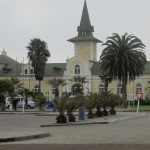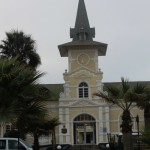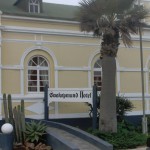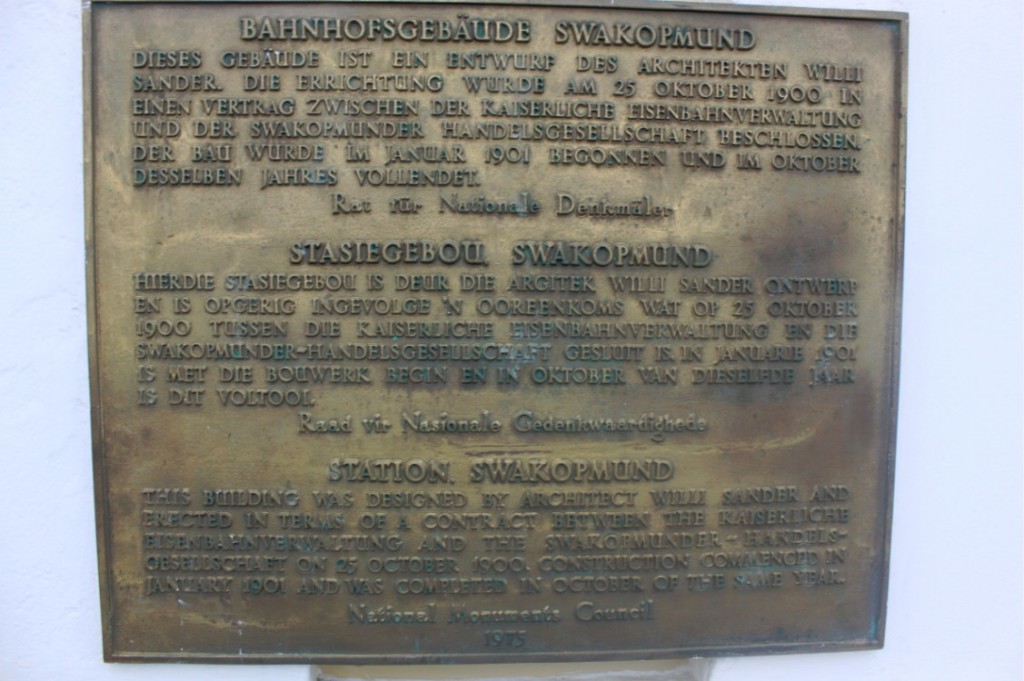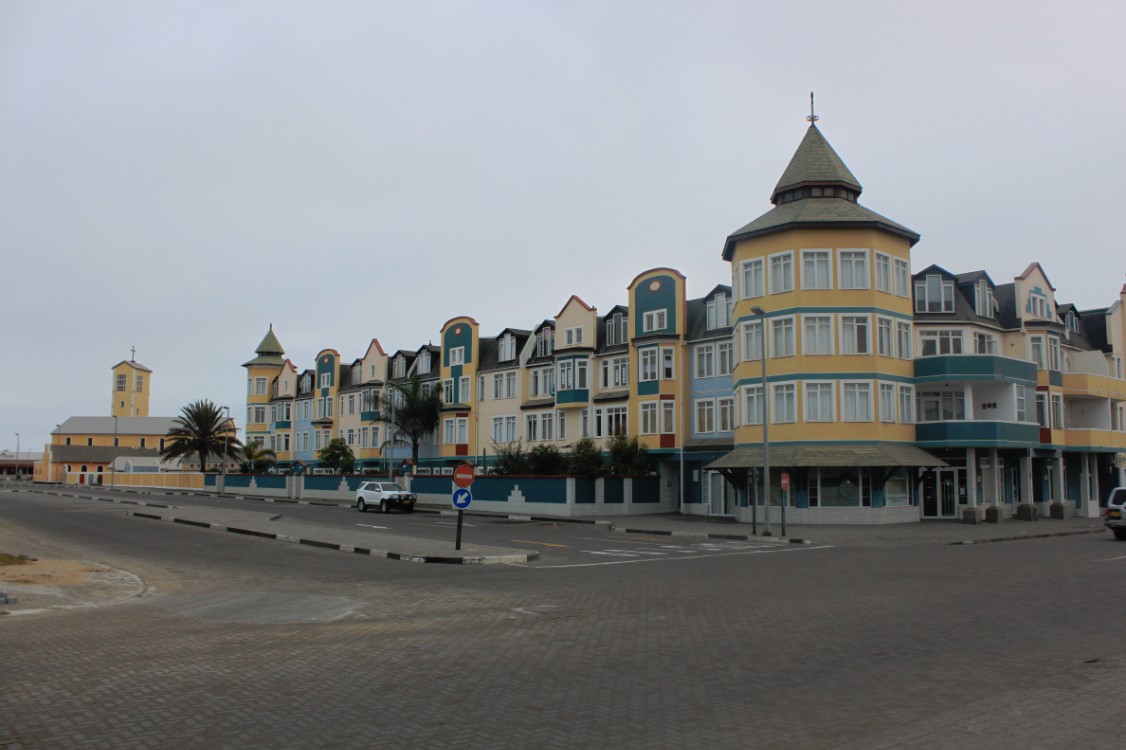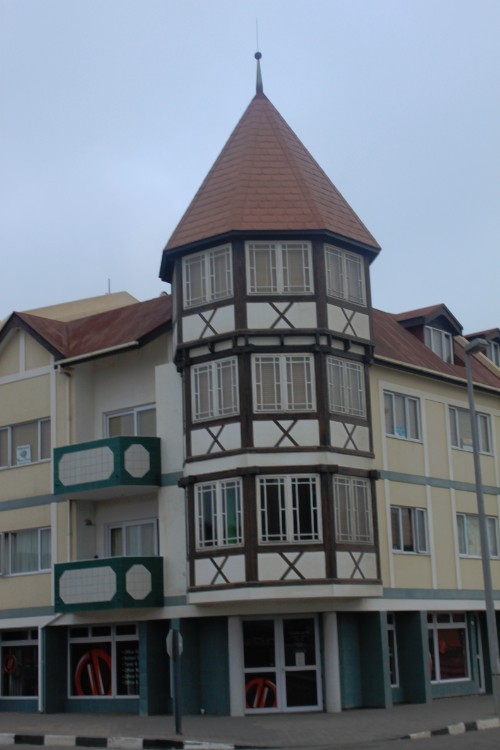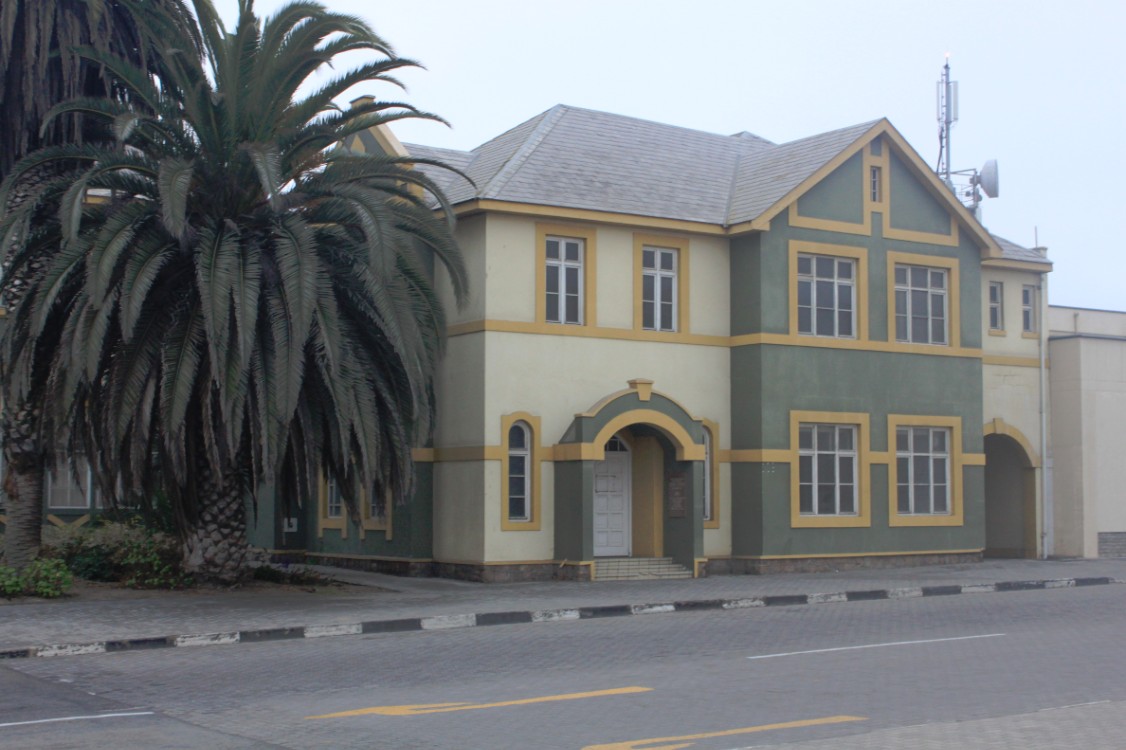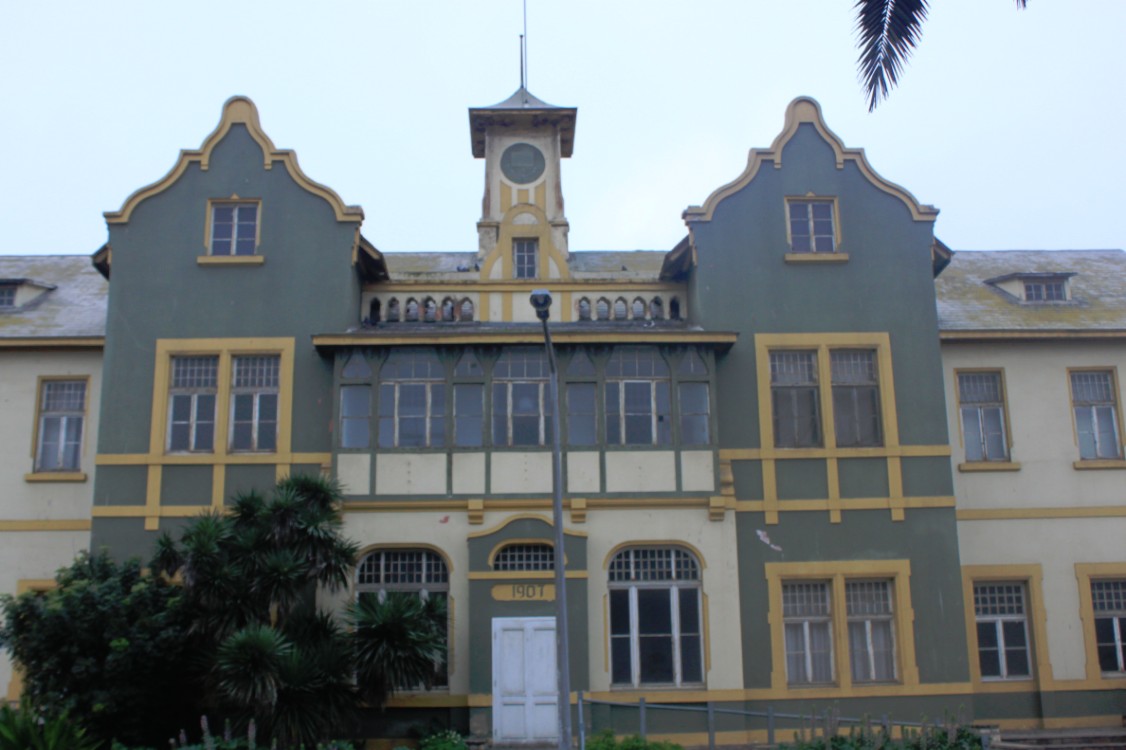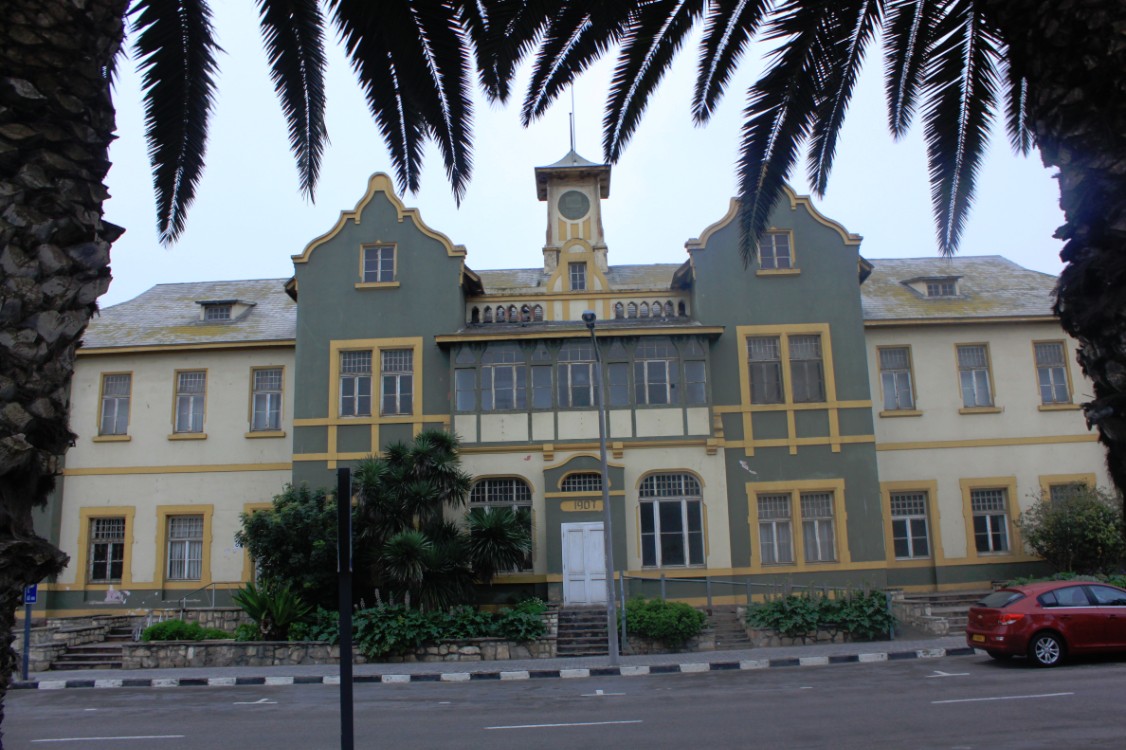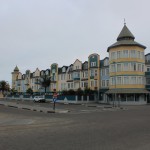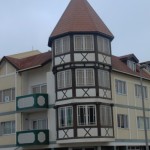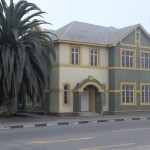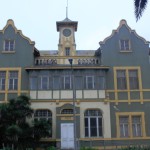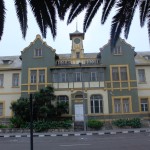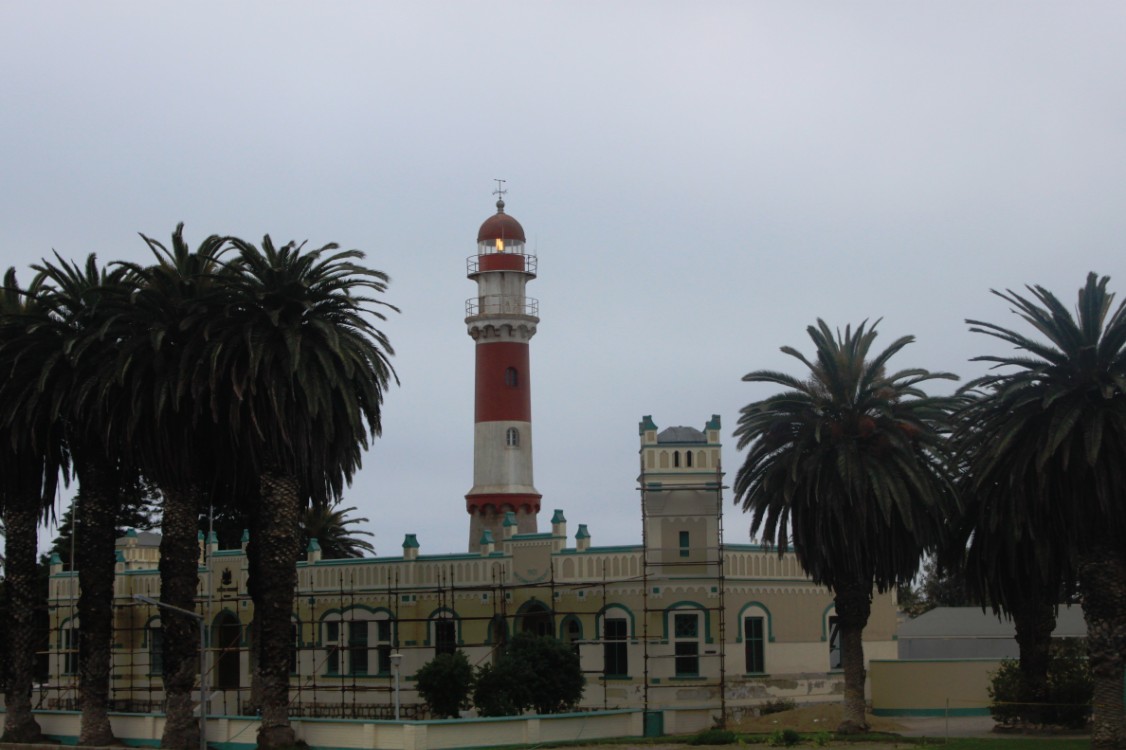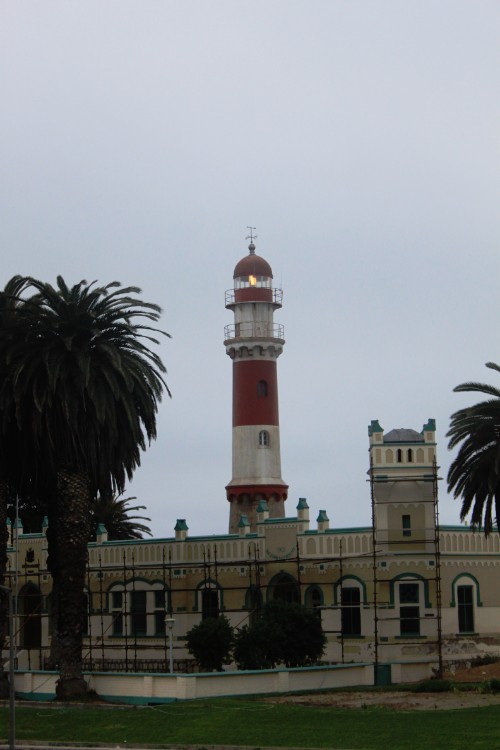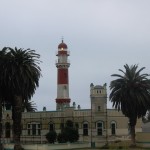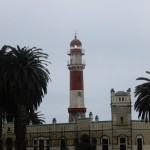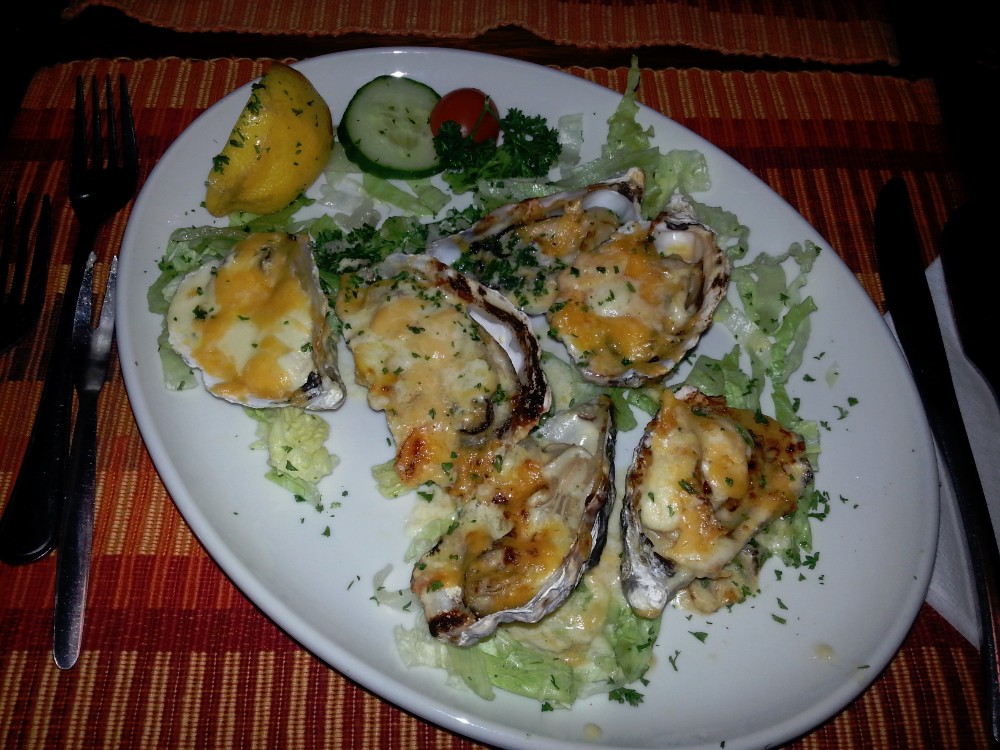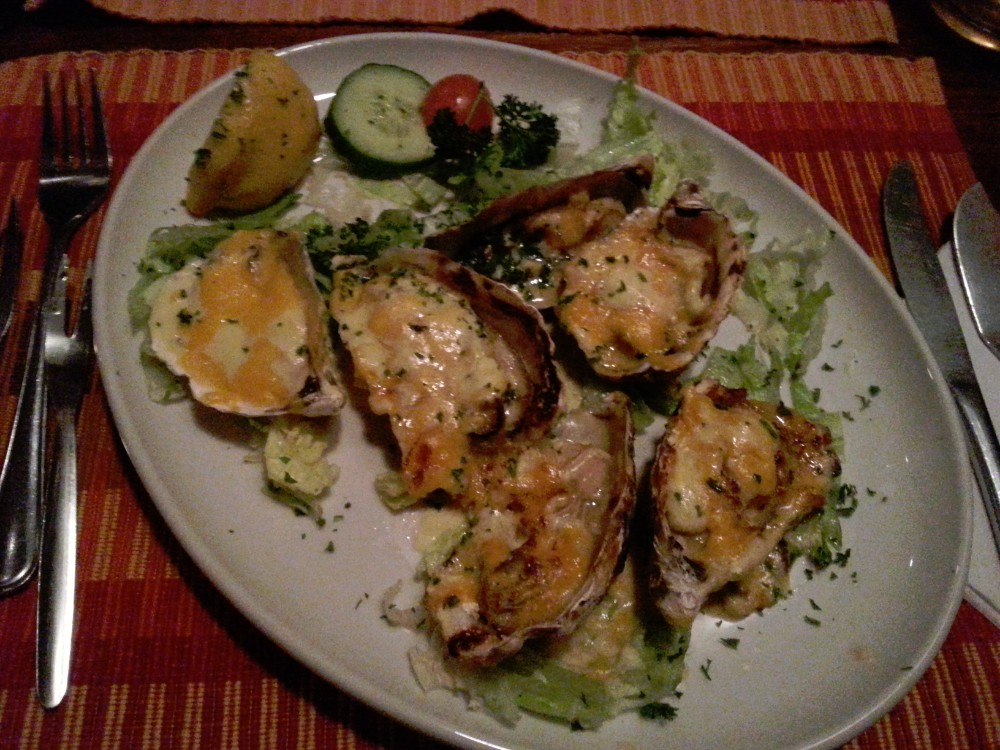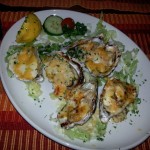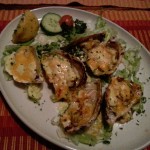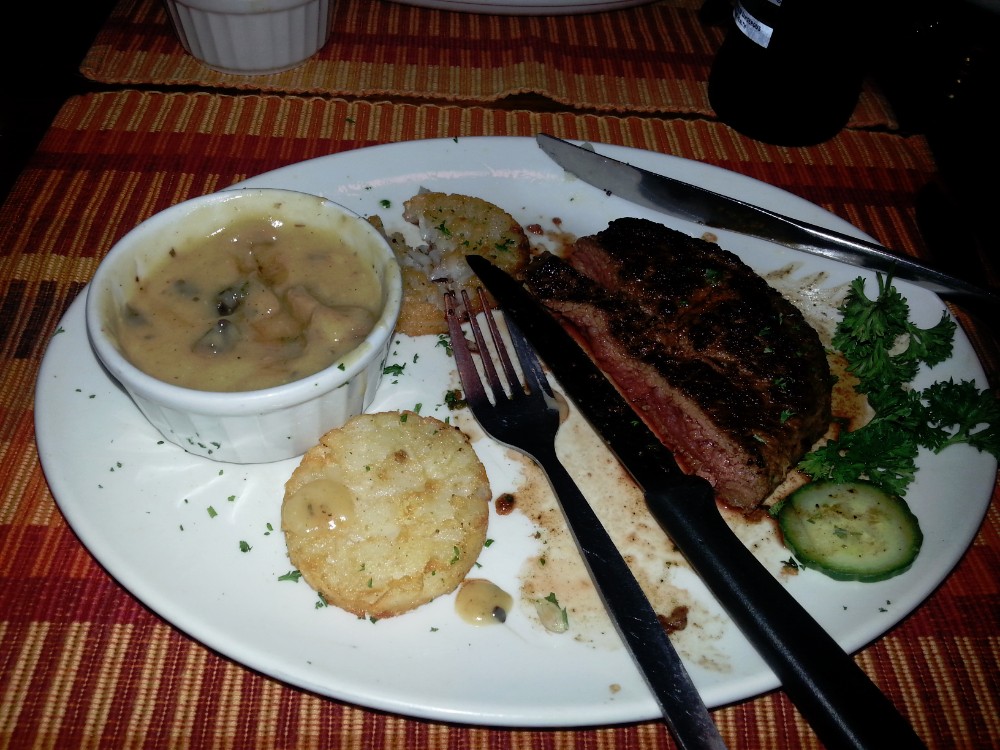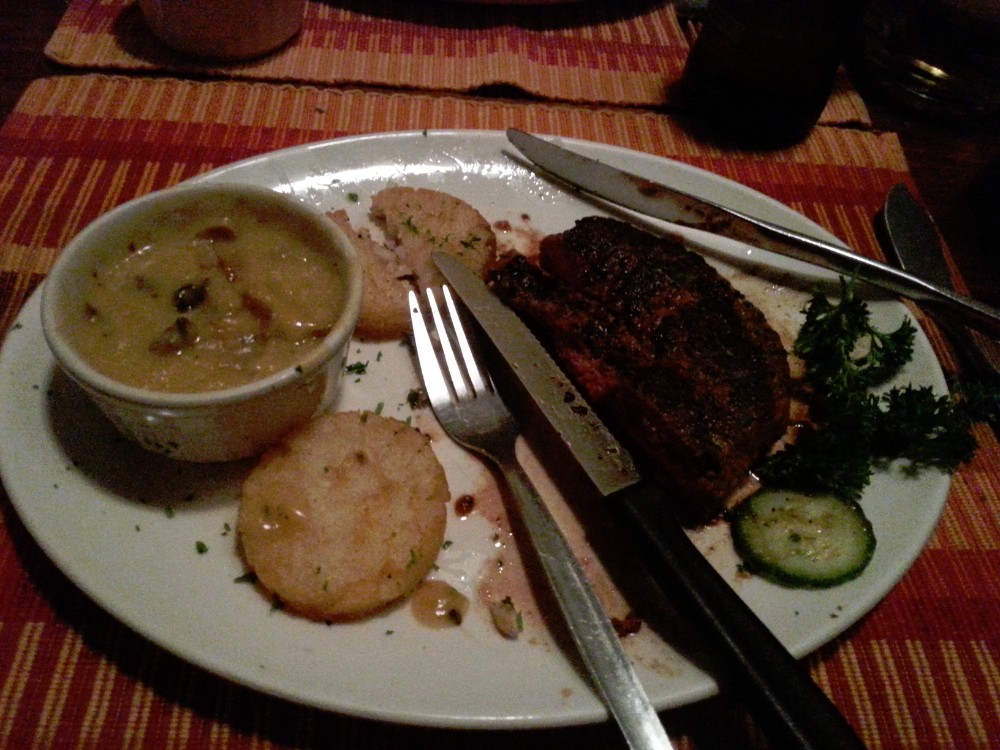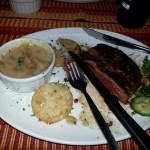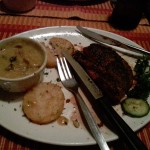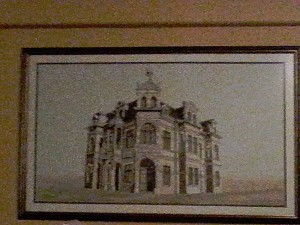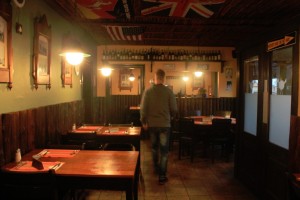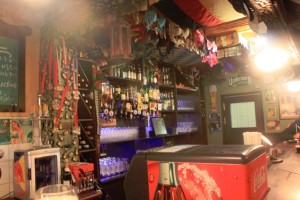5. Swakopmund
After The Wandelgek had arrived late in the afternoon at the Dunedin II Hotel, where they had rooms bordered by a courtyard where the truck could park, he decided to spend the evening in town and to get something tasty to eat. That should be a piece of cake in a city where many German residents lived, family of German settlers from the time that Namibia was still named German South West Africa. The service at the Dunedin Hotel was anything but friendly and grudgingly helpful when The Wandelgek asked for places to eat and drink in town. The receptionist was seriously lacking geographical knowledge and she seemed to have a headache. She picked up a floor plan of the town and marked even the location of the hotel wrong. The Wandelgek asked for a cozy establishment where they had German dishes on the menu, besides African Game. In this town they had restaurants having sauerkraut, dumplings and apfelstrudel on the various menus next to Impala, Springbok or Crocodile. But The Wandelgek was not really searching for German food in Namibia, but above all he was searching for German beer in Namibia. The local lager beer was named Windhoek Lager, but in Swakopmund they should have Erdinger Weizenbeer too. She then recommended the Brauhaus, however that was closed on Sunday and someone from a hotel reception of such a small town with a limited amount of restaurants should have known that.
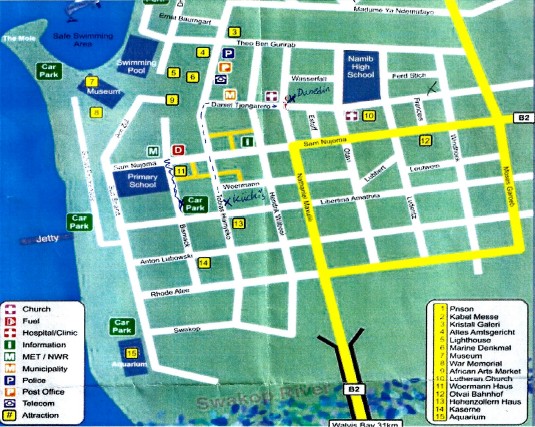 Kucki’s Pub
Kucki’s Pub
The Wandelgek then decided to proceed to Kuckis Pub, which was describedin the Lonely Planet of Namibia and Botswana as very good. That was not an exaggeration, but an understatement. You get it; Kucki‘s Pub was for the next two days, a hangout pub for The Wandelgek in Swakopmund.
That first evening The Wandelgek decided (being tired from the long journey from Hammerstein through the
Namib desert), to have a drink at the bar and eat and he ordered a nice cold Erdinger Weizen Beer, a Game Goulash soup and the main course, a Springbok Sirloin of 300 grams. Everything tasted equally delicious.
In this pub were lots of other backpackers who were also traveling through Africa and different talks about travel itineries and adventures were discussed. After another Weizenbier The Wandelgek walked back to the Dunedin hotel where the guard was sleeping outside, behind the gate. The wandelgek went to his room, showered and fell asleep.
The next day The Wandelgek took part in two wonderful and completely different excursions, which will be discussed in the following two blog posts.
After returning from the second excursion at the Dunedin Hotel, which was somewhere at the beginning of the afternoon, The Wandelgek decided to make a beautiful city walk through Swakopmund.
Swakopmund
Swakopmund (German for “Mouth of the Swakop”) is a city on the coast of western Namibia, 280 km (170 mi) west of Windhoek, Namibia’s capital. It is the capital of the Erongo administrative district. The town has 44,725 inhabitants and covers 193 square kilometres (75 sq mi) of land. The city is situated in the Namib desert and is the fourth largest population centre in Namibia.
Swakopmund is a beach resort and an example of German colonial architecture. It was founded in 1892 as the main harbour for German South-West Africa, and a small part of its population is still German-speaking today.
Buildings in the city include the Altes Gefängnis prison, designed by Heinrich Bause in 1909. The Woermannhaus, built in 1906 with a prominent tower, is now a public library. Attractions in Swakopmund include a Swakopmund Museum, the National Marine Aquarium, a crystal gallery and spectacular sand dunes near Langstrand south of the Swakop River. Outside of the city, the Rossmund Desert Golf Course is one of only five all-grass desert golf courses in the world. Nearby lies a camel farm and the Martin Luther steam locomotive, dating from 1896 and abandoned in the desert.
Swakopmund lies on the B2 road and the Trans-Namib Railway from Windhoek to Walvis Bay. It is served by Swakopmund Airport and Swakopmund Railway Station.
Etymology
The Herero called the place Otjozondjii. The name of the town is derived from the Nama word Tsoakhaub (“excrement opening”) describing the Swakop River in flood carrying items in its riverbed, including dead animals, into the Atlantic Ocean. However, Prof. Peter Raper, Honorary Professor: Linguistics, at the University of the Free State points out that the name for Swakopmund is based on the San language, namely from “xwaka” (rhinoceros) and “ob” (river). The German settlers changed it to Swachaub, and when in 1896 the district was officially proclaimed, the version Swakopmund (German: Mouth of the Swakop) was introduced.
History
Captain Curt von François founded Swakopmund in 1892 as the main harbour for the Imperial German colony—The deep sea harbour at Walvis Bay belonged to the British. The founding date was on August 8 when the crew of gunboat Hyäne erected two beacons on the shore. Swakopmund was chosen for its availability of fresh water, and because other sites further north such as Cape Cross were found unsuitable. The site did, however, not offer any natural protection to ships lying off the coast, a geographical feature not often found along Namibia’s coast.
When the first 120 Schutztruppe soldiers and 40 settlers were offloaded at Swakopmund, they had to dig caves into the sand for shelter. The offloading was done by Kru tribesmen from Liberia who used special boats. Woermann-Linie, the operator of the shipping route to Germany, employed 600 Kru at that time.
Swakopmund quickly became the main port for imports and exports for the whole territory, and was one of six towns which received municipal status in 1909. Many government offices for German South-West Africa had offices in Swakopmund. During the Herero Wars a concentration camp for Herero people was operated in town. Inmates were forced into slave labour; approximately 2,000 Herero died.
Soon, the harbour created by the “Mole” (breakwater) silted up, and in 1905 work was started on a wooden jetty, but in the long run this was inadequate. In 1914 construction of a steel jetty was therefore commenced, the remains of which can still be seen today. After World War I it became a pedestrian walkway. It was declared structurally unsound and was closed to the public for seven years, and in 2006 renovations to the portion supported by concrete pillars were completed, with a seafood restaurant and sushi bar being added to the end portion of the steel portion of the jetty soon after. A new timber walkway was also added onto the existing steel structure, and the steel portion of the jetty reopened to the public in late 2010.
Trading and shipping companies founded branches in Swakopmund. A number of these buildings still exist today. After German South-West Africa was taken over by the Union of South Africa in 1915, all harbour activities were transferred from Swakopmund to Walvis Bay. Many of the Central Government services ceased. Businesses closed down, the number of inhabitants diminished, and the town became less prosperous. However, the natural potential of Swakopmund as a holiday resort was recognised, and this potential has subsequently been developed. Today tourism-related services form an important part of the town’s economy.
After Namibian independence from South Africa in 1990 many street names were changed from their original German, or in some cases, Afrikaans names, to honour (mostly black) Namibians. For example, in 2001, then-president of Namibia Sam Nujoma renamed the main street (Kaiser-Wilhelm-Straße) Sam Nujoma Avenue in honour of himself.
Geography
Climate
Surrounded by the Namib Desert on three sides and the cold Atlantic waters to the west, Swakopmund enjoys a mild desert climate (BWn, according to the Köppen climate classification). The average temperature ranges between 15°C (59°F) to 25°C (77°F). Rainfall is less than 20 mm per year, making gutters and drainpipes on buildings a rarity. The cold Benguela current supplies moisture for the area in the form of fog that can reach as deep as 140 km (87 mi) inland. Fogs that originate offshore from the collision of the cold Benguela Current and warm air from the Hadley Cell create a fog belt that frequently envelopes parts of the Namib desert. Coastal regions can experience more than 180 days of thick fog a year. While this has proved a major hazard to ships—more than a thousand wrecks litter the Skeleton Coast—it is a vital source of moisture for desert life. The fauna and flora of the area have adapted to this phenomenon and now rely upon the fog as a source of moisture.
City stroll
During the afternoon city walk, The Wandelgek walked passed some buildings in the typical Namibian–German architectural style of Swakopmund.
Swakopmund has traditionally always had very wide streets and a reason for that was that during the colonial era, ox pulled carriages drove through the streets and such an ox carriage needed lots of space.
The Dunedin Hotel was also located at such a wide street, the Daniel Tjongarero Avenue that ran through the center toward the Atlantic coast. Near the hotel across the road was the German Lutheran church …
On the other side of the road was the building of the Namib High School …
Through Otavi Street, The Wandelgek walked towards the former station of Swakopmund in which now a hotel is located …
The Wandelgek then walked past a number of modern and less modern houses in typical Namibian–German style towards the coast …
On the Atlantic coast of Namibia were a number of ports and Swakopmund had a small port which was important in the colonial era, particularly for the Germans who build and owned it. Swakopmund was the appropriate place to do this, because of the presence of fresh water (Swakop River) and the fact that the large port of neighbouring Walvis Bay was in British hands, ensured that the port became a growing settlement.
The Wandelgek therefore decided to end the walk and visit at the onset of twilight Kucki’s Pub again for a delicious cold Weizenbier …
The Wandelgek then walked back to the Dunedin hotel to freshen up and to wait for his travel companions in the guest room. That night we went for dinner … yes at Kucki’s Pub.
Return to Kucki’s Pub
The Wandelgek until now had only seen the bar and had not noticed that there was quite a large upstairs space as well. This was not a small pub, but a very well-run business, where many people came for dinner.
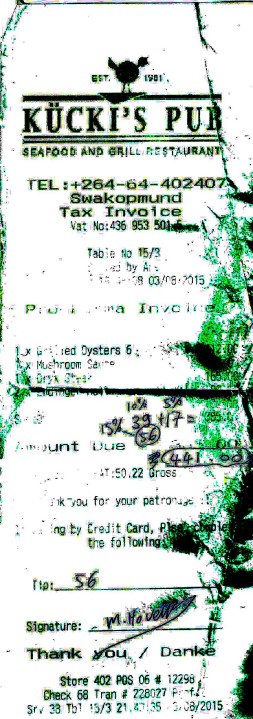 The Wandelgek ordered another Weizenbier and some grilled oysters …
The Wandelgek ordered another Weizenbier and some grilled oysters …
and Oryx steak of 300 grams with mushroom sauce.
In addition, there were also some vegetables and potato rosti. The meat was soft as butter and tasted delicious.
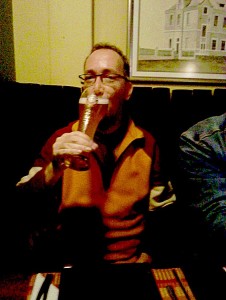 And all accompanied by a delicious Erdinger Weizen beer … or two😉 Prosit!
And all accompanied by a delicious Erdinger Weizen beer … or two😉 Prosit!
Drawings of the strange architecture of Swakopmund hung everywhere in the pub …
After dinner, The Wandelgek decided to go to the bar and talked to some travelers passing through 🙂
More info: http://www.kuckispub.com/
The Wandelgek then walked to the Dunedin hotel because the next day the adventurous journey would be continued again with a long ride …

